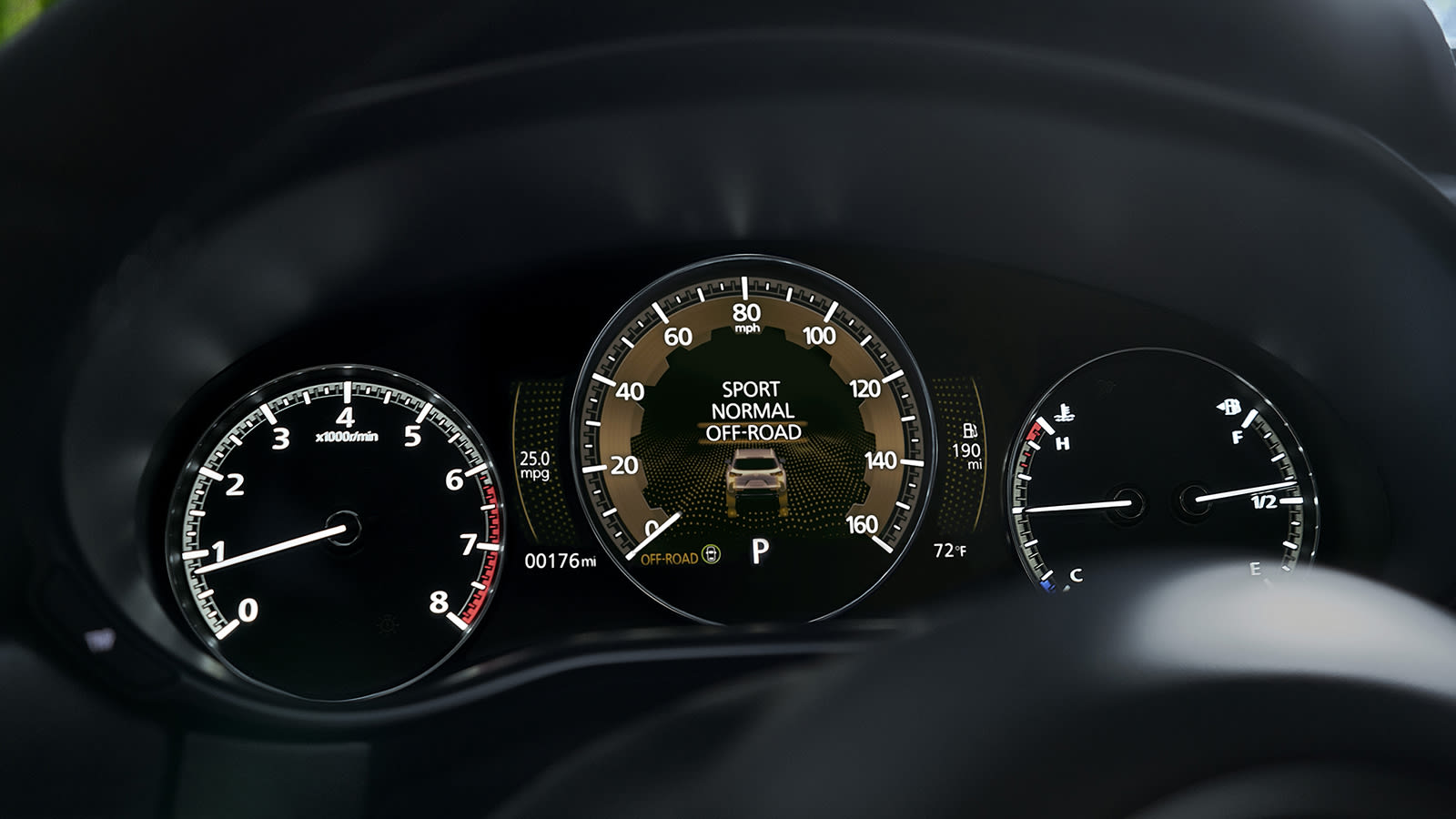Although Mazda is still keeping plenty of the specifics about the 2023 CX-50, its most rugged SUV, under wraps, Mazda engineer Dave Coleman provided plenty of information to give us a much better idea of the size of the vehicle and what it’s based on. Generally speaking, it’s bigger than the existing CX-5, and it’s more capable.
The CX-50 is based on the same basic platform as the Mazda3 and CX-30. And that extends to the suspension design of MacPherson struts up front and a torsion beam at the rear. This is because this platform was designed with the torsion beam in mind, and Coleman and Mazda contend that this suspension design was used to keep vehicle motions simple and natural-feeling.
While the CX-30 that lends its platform is a subcompact SUV, the CX-50 is a bit bigger in almost every dimension than the compact CX-5. It’s longer, wider and has more ground clearance, however overall height is a bit lower. The size pays dividends inside, too, with greater legroom than the CX-5, although Coleman couldn’t give any specific dimensions for the CX-50 inside or out. He also said that the CX-50 is wider even than the CX-9, and as a result, it would actually be too wide to build at Mazda’s Hiroshima facility, hence its production at the new Mazda-Toyota joint plant in Alabama. Mazda was also able to go with these dimensions since the CX-50 is designed for North America, so making sure it was usable down tight Japanese and European streets wasn’t a priority.
Besides being larger, the CX-50 will have greater capability than the CX-5. Coleman revealed that it will have a better towing capacity than the older SUV’s 2,000-pound limit, but he didn’t say the exact amount. Also, in an effort to improve off-road capability, Mazda fitted a heavier-duty all-wheel-drive coupling with a larger clutch, one bigger than even that of the CX-9. This is coupled with the off-road driving mode that we touched on in the reveal article that adjusts various parameters for off-road driving. Something that’s not included is a hill-descent control function, which Coleman said was left out in favor of making the brakes very controllable to keep driving settings simple and prevent the car from doing anything unusual, leaving the control in the hands of the driver.
Coleman revealed a few other tidbits about the CX-50 that don’t really fall into any particular subject area. Despite a similar name and roughly similar size, the CX-50 will not replace the CX-5, as was the eventual case with the CX-30 and CX-3. Apparently the two SUVs are targeted at different buyers. Also, while he couldn’t give details on the hybrid CX-50, he did say it’s a couple of years out, still. It will also utilize some Toyota technology, but he wouldn’t say to what extent.
Related video:
Source: www.autoblog.com

